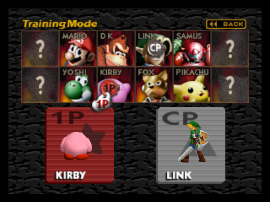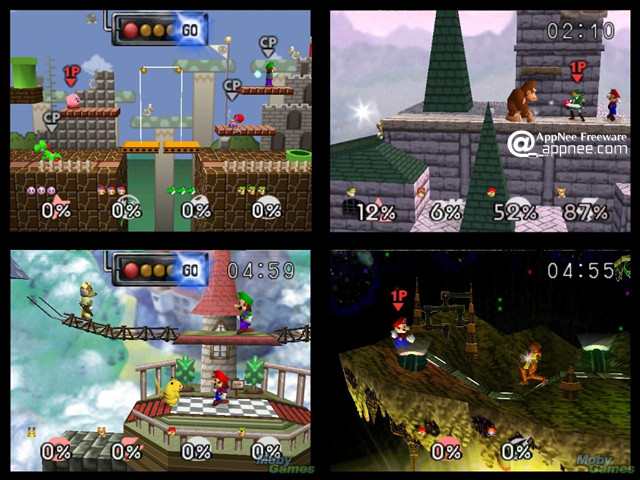
Some feel this is a good thing, since they were arguably too strong in the previous game, while others feel like their favorite character has been made useless. The biggest tweaks are with Kirby & Ness who were drastically weakened or nerfed. Several tweaks were made to existing characters, to the dismay of some fans. Additionally, Smash Attacks can now be charged up, and also used with the C-Stick (Vs. Some attacks have been moved to different combinations (such as Link's boomerang) to make room for new moves (Link's Bow & Arrow). The controls are almost identical, except with the addition of a new special attack, B and Forward. The higher your damage, the farther you fly when you're hit hard, until eventually, you just fall too far off the stage that you can't jump/fly back.

Instead of a lifebar, you are given a "damage percentage counter", which gets higher the more you are hurt. Items can be thrown in for added mayhem, giving characters weapons or health or invincibility or something that will just blow everything up. There is much less focus on combos and much more on platforming. There are no long button combos, but instead simple button + direction attacks. For those that don't know what it's like, it's completely different from a traditional fighting game. The games fighting engine is a much more refined version of the first game, Super Smash Bros. In 2008, a sequel was released for the Wii, titled Super Smash Bros.

It is also still the best selling game on the GameCube (over three million sold). The game features many unlockables, such as characters, stages, and trophies that give trivia and background info on a wide range of Nintendo products.Įven though it was almost a launch title for the Nintendo GameCube (although it is one in Europe and Australia), it has almost always been a top 10 weekly seller for the GameCube, years after its release. Unlike other fighting games, SSBM places emphasis on platforming in combat, and does away with complicated button combos and the life bar. This game is known for its ease for new players to pick up and play, yet holds enough depth to keep veteran fighter fans occupied. Players can fight with 25 of Nintendo's mascots on over 20 stages. It was first released in Japan and North America in 2001.


Melee is a Nintendo GameCube game that serves as the sequel to the Nintendo 64 title, Super Smash Bros.


 0 kommentar(er)
0 kommentar(er)
